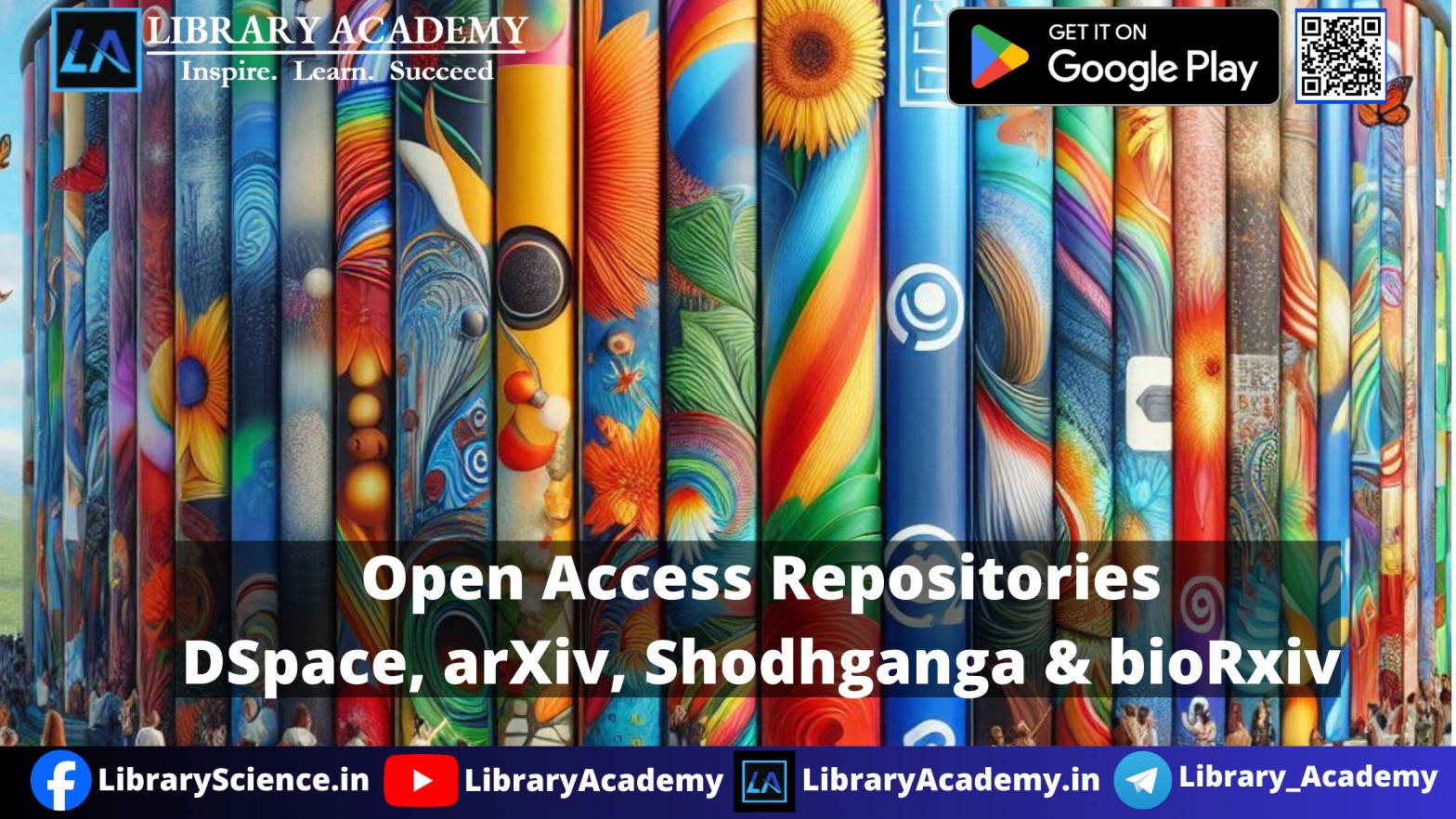Open Access Repositories (OARs) are digital platforms that provide free and unrestricted access to scholarly research outputs, including journal articles, theses, conference papers, datasets, and books. These repositories ensure that research findings are widely available without paywalls, promoting knowledge dissemination and academic collaboration.
Types of Open Access Repositories:
- Institutional Repositories – Managed by universities or research institutions to archive their scholarly output.
- Example: DSpace@MIT (Massachusetts Institute of Technology)
- Subject-Specific Repositories – Focused on specific disciplines or fields of study.
- Example: arXiv (Physics, Mathematics, Computer Science)
- National/Regional Repositories – Maintained at a national level to support open access mandates.
- Example: Shodhganga (Indian theses repository)
- Preprint Repositories – Platforms where researchers share early versions of their papers before peer review.
- Example: bioRxiv (Biology Preprints)
- Aggregated Repositories – Search engines that collect metadata from multiple repositories.
- Example: BASE (Bielefeld Academic Search Engine)
Benefits of Open Access Repositories:
✔️ Increases Research Visibility – Makes research accessible to a global audience.
✔️ Encourages Collaboration – Facilitates knowledge sharing among scholars.
✔️ Long-term Preservation – Ensures long-term access to academic content.
✔️ Compliance with Open Access Policies – Supports mandates from funding agencies like Plan S.
MCQs on Open Access Repositories
1. What is the primary purpose of an Open Access Repository?
a) To store paid research articles
b) To restrict access to scholarly content
c) To provide free access to research outputs
d) To publish only peer-reviewed articles
Answer: c) To provide free access to research outputs
2. Which of the following is an example of an Institutional Repository?
a) arXiv
b) DSpace@MIT
c) PubMed Central
d) Europe PMC
Answer: b) DSpace@MIT
3. Shodhganga is an Open Access Repository primarily for:
a) Preprints in physics
b) Research articles in biology
c) Theses and dissertations in India
d) Patents and trademarks
Answer: c) Theses and dissertations in India
4. Which type of repository focuses on early versions of research papers before peer review?
a) Institutional Repository
b) Preprint Repository
c) National Repository
d) Aggregated Repository
Answer: b) Preprint Repository
5. Which Open Access Repository specializes in physics, mathematics, and computer science?
a) PubMed Central
b) arXiv
c) DOAJ
d) Shodhganga
Answer: b) arXiv
6. What does BASE (Bielefeld Academic Search Engine) do?
a) Publishes new scientific journals
b) Aggregates metadata from multiple open access repositories
c) Provides paid access to scholarly articles
d) Restricts access to institutional subscribers
Answer: b) Aggregates metadata from multiple open access repositories
7. Which of the following is a subject-specific repository for life sciences and medical research?
a) SSRN
b) bioRxiv
c) DSpace@MIT
d) Europe PMC
Answer: b) bioRxiv
8. What is the main benefit of Open Access Repositories?
a) They make research outputs accessible without cost
b) They allow researchers to publish anonymously
c) They ensure only paid journals are included
d) They restrict access to university members only
Answer: a) They make research outputs accessible without cost
9. Which repository is widely used for biomedical and life sciences research articles?
a) Europe PMC
b) arXiv
c) Shodhganga
d) SSRN
Answer: a) Europe PMC
10. Which of the following best defines Plan S in the context of Open Access?
a) A commercial publisher’s subscription model
b) A policy to mandate immediate open access to funded research
c) A type of restricted-access repository
d) A data encryption system for repositories
Answer: b) A policy to mandate immediate open access to funded research

